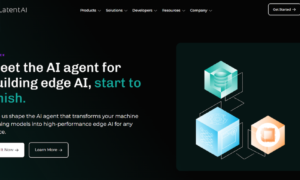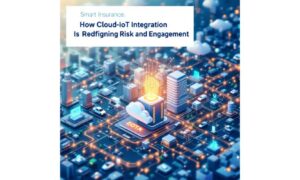Picture a world where the inanimate is alive, where your coffee cup chats with your alarm clock, and where technology weaves seamlessly into the fabric of our daily existence, reshaping our work, leisure, and lifestyle. Welcome to the realm of the Internet of Things (IoT), an epochal technological paradigm shift that is redefining industries across the globe. From intelligent domiciles to autonomous vehicles, this article takes a deep dive into the remarkable ways IoT is metamorphosing the commonplace into the extraordinary. Brace yourself for a journey into boundless possibilities as we unveil the intricate tapestry of this avant-garde technology and its influence on our impending future.
Introduction to the IoT Phenomenon
The Internet of Things (IoT) represents an intricate network of interlinked devices and sensors, forming a virtual nervous system that orchestrates the collection and exchange of data. The aggregated data plays a pivotal role, not only in overseeing and managing these devices and sensors but also in automating various processes that underpin modern life.
IoT’s transformative potential spans across multiple sectors, from healthcare and manufacturing to transportation. In healthcare, IoT steps in as a vigilant guardian, meticulously monitoring patient vitals and medical records. In manufacturing, it acts as a sentinel, scrutinizing equipment performance and production line efficacy. In transportation, it manifests as an observer, tracking vehicles and discerning driving patterns.
The merits of IoT are profound. Through the interconnection of devices and sensors, enterprises gain unprecedented insights that were hitherto inaccessible. This augmented visibility translates to informed decision-making, heightened efficiency, and diminished operational costs.
Advantages Engrained in IoT
The merits of IoT are manifold, catering to a diverse array of industries. In the realm of transportation, IoT plays a pivotal role in real-time vehicle tracking and traffic monitoring. This data, in turn, optimizes routes and ameliorates traffic congestion. For manufacturers, IoT becomes an invaluable tool for tracking production data and identifying potential areas for enhancement. In healthcare, IoT proves its worth by monitoring patient health data and sounding early alarms for impending issues.
IoT bequeaths a treasure trove of data that, when deciphered, augments efficiency and productivity across industries. The advantages are limitless, perpetually expanding as the technology continues its evolution.
The Multifaceted Nature of IoT Technology
IoT technology comes in diverse avatars, each armed with its unique capabilities. Here are some of the most prominent types of IoT technology:
Smart Sensors: These sensors are designed to gather data about their environment and relay it to a central system. They monitor parameters such as temperature, motion, and even ambient light.
RFID Tags: RFID tags, diminutive in size, can be affixed to objects or individuals. Emitting a signal decipherable by RFID readers, these tags allow for the tracking of their location or the identification of the associated entity.
GPS Tracking: GPS tracking devices leverage satellite signals to pinpoint their exact location. This information facilitates the monitoring of movement for both people and objects.
WiFi-Enabled Devices: Devices endowed with WiFi capabilities, such as smartphones and laptops, foster internet connectivity and data sharing with other devices.
Bluetooth-Enabled Devices: Devices furnished with Bluetooth connectivity enable wireless interactions with other devices, facilitating seamless data sharing.
IoT’s Resonance in Everyday Life
IoT applications are catalysts for the transformation of mundane routines into interconnected and efficient experiences. A snapshot of IoT’s influence across various domains includes:
Smart Homes: Envision returning from a grueling workday, only to find your home intuitively illuminating and preparing your pre-cooked dinner. A notification on your smartphone alerts you that the washing machine has finished its cycle, prompting you to shift your laundry to the dryer. These are mere glimpses of the potential rendered by a smart home powered by IoT devices.
Wearable Devices: Fitness trackers have adroitly adopted IoT technology. These wearables, communicating with other devices and applications, monitor everything from footsteps to heart rates and sleep patterns, culminating in improved health and fitness.
Transportation: IoT has woven its magic into our modes of transportation, from cars to buses to trains. Connected vehicles engage in seamless communication with each other and infrastructure like traffic lights, culminating in safer and more efficient journeys. Public transportation systems utilize IoT for asset tracking and maintenance scheduling, minimizing disruptions for passengers.
Retail: Retailers leverage IoT devices like sensors and beacons to amass data on customer behavior within their stores. This information serves as fodder for an enhanced shopping experience, encompassing reduced checkout waiting times and more efficient shelf restocking.
Leveraging IoT’s Business Prospects
The Internet of Things (IoT) occupies a prominent echelon in contemporary technology discussions. This transformative force is sculpting industries, metamorphosing lifestyles, and steering the course of our daily activities.
But what exactly is IoT? In simple terms, it constitutes a network interlinking physical devices, vehicles, household appliances, and sundry items adorned with electronics, software, sensors, and connectivity. This network empowers these entities to communicate and exchange data.
Now that the essence of IoT is deciphered, let’s embark on a journey through the ways businesses are reaping its benefits:
Enhanced Efficiency: IoT’s paramount advantage lies in elevating operational efficiency. Companies, for instance, deploy sensors to monitor real-time inventory levels, curbing waste and ensuring perpetual product availability. Furthermore, by scrutinizing equipment usage data, businesses engineer optimizations that foster peak performance and curtail maintenance expenditures.
Augmented Customer Experiences: IoT augments customer encounters with your brand. Retailers, leveraging beacons, send personalized offers and recommendations to shoppers’ smartphones as they navigate stores. Hotels employ IoT-powered keycards to render a seamless check-in process, epitomizing customer-centric service.
Elevated Sales: Unquestionably, one of IoT’s conspicuous perks is its capacity to amplify sales. By unraveling customer needs and preferences, companies can tailor offerings, driving sales. Additionally, IoT’s internet connectivity opens vistas for data-driven strategies encompassing upselling and cross-selling.
In our digitized universe, embracing avant-garde technology is imperative for business vitality. IoT furnishes enterprises with the avenues to bolster efficiency, enrich customer experiences, and elevate sales, all the while streamlining costs.
Navigating the IoT Landscape: Hurdles and Solutions
Despite IoT’s meteoric rise, its voyage is nascent, marked by myriad hurdles demanding resolution before it can truly revolutionize the tech sphere. One of the cardinal impediments is the implementation challenge. Enlisting businesses and organizations in the IoT journey is a formidable task, given the demand for new infrastructure. Additionally, safeguarding sensitive data amassed by IoT devices is pivotal, necessitating comprehensive solutions to address security concerns. The impending surge in IoT device count underscores the significance of scalability, demanding proactive measures to accommodate exponential growth.
In Summation
The Internet of Things (IoT) is an architect of metamorphosis, interlinking devices, machines, materials, and individuals to forge an intelligent network. By interweaving everyday data points and channeling them to yield astute solutions, IoT has indelibly improved both macro-level industrial processes and micro-level individual interactions. Over time, its influence will burgeon, ushering us into an era where connection is paramount, and the contours of our existence are redefined.



































